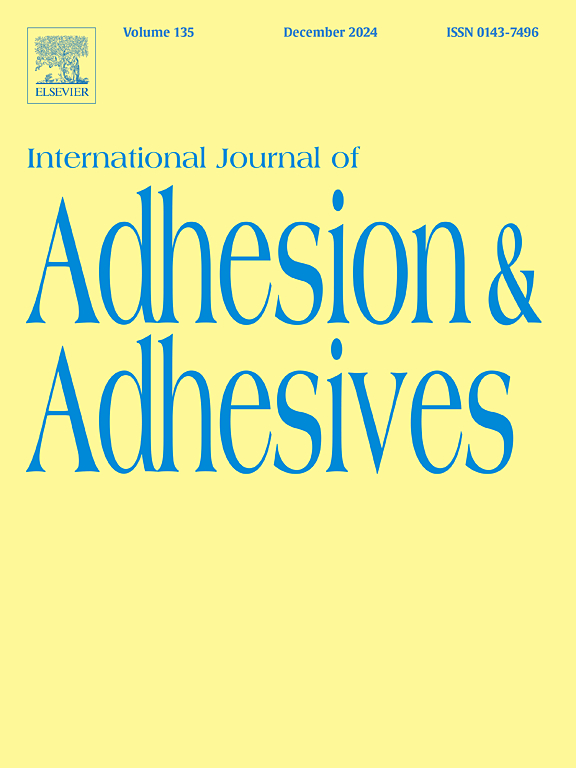将抗菌材料纳入义齿粘接剂:体外研究的系统回顾
IF 3.5
3区 材料科学
Q2 ENGINEERING, CHEMICAL
International Journal of Adhesion and Adhesives
Pub Date : 2025-04-01
DOI:10.1016/j.ijadhadh.2025.104022
引用次数: 0
摘要
本系统综述确定了目前用于义齿粘接剂的抗菌材料及其疗效。该方案已在开放科学框架(https://osf.io/wb3uh/)上注册。检索截止到2024年5月的文章,检索了PubMed、Lilacs、Scopus、Embase、Science Direct和谷歌Scholar等6个数据库。创建了五组搜索词。合格标准包括:将抗菌药物纳入义齿粘接剂的实验研究;抗菌活性评价;在同行评议的期刊上发表文章,并用英语发表文章。在选取的20篇文章中,有16篇使用了无机材料,12篇使用了不同的材料。11篇文章评价了抗菌药物,包括两性霉素B、氯己定、头孢氨苄、氟康唑、制霉菌素、克霉唑和咪康唑。六篇论文研究了纳米材料,包括银纳米粒子(AgNPs)、氧化锆粒子和纳米粒子、氧化锌(ZnO)、氧化锌纳米粒子(ZnONPs)和纳米结构钒酸银纳米粒子(AgVO3)修饰的假牙粘接剂。一项研究,分类为其他,调查了假牙粘接剂纳入预反应玻璃离子颗粒(S-PRG)。只有8篇文章使用了有机材料,20篇可区分的材料,分为5个亚组。有机材料包括不同配方的壳聚糖、抗菌肽、脂质和提取物。一项研究,归类为其他,研究了含有吡唑的粘合剂。根据研究结果,义齿粘接剂中添加的无机剂可分为两大类:纳米材料或抗菌药物。少数研究纳入了有机制剂。所有无机剂均能促进义齿粘接剂的抗菌活性。除葡萄籽提取物、抗菌肽和脂类外,有机制剂也有效。因此,可以通过加入抗菌剂来增加义齿粘接剂的使用所带来的好处。本文章由计算机程序翻译,如有差异,请以英文原文为准。
Incorporation of antimicrobial materials into denture adhesives: A systematic review of in vitro studies
This systematic review identify the antimicrobial materials currently incorporated into denture adhesives and their efficacy. The protocol was registered with the Open Science Framework (https://osf.io/wb3uh/). Six databases, including PubMed, Lilacs, Scopus, Embase, Science Direct and Google Scholar, were accessed for the search of articles up to May 2024. Five groups of search terms was created. Eligibility criteria included: experimental studies incorporating antimicrobial agents into denture adhesives; evaluating antimicrobial activity; published articles in peer-reviewed journals and in the English language. Of the 20 articles selected, 16 used inorganic materials and 12 different materials were found, which were divided into 3 subgroups. Eleven articles evaluated antimicrobials medicines, including amphotericin B, chlorhexidine, cephalexin, fluconazole, nystatin, clotrimazole and miconazole. Six articles investigated nanomaterials, incorporating silver nanoparticles (AgNPs), zirconium oxide particles and nanoparticles, zinc oxide (ZnO), zinc oxide nanoparticles (ZnONPs), and nanostructured silver vanadate decorated with silver nanoparticles (AgVO3) into denture adhesives. One study, classified as other, investigated denture adhesives incorporating pre-reacted glass ionomer particles (S-PRG). Only 8 selected articles used organic materials and 20 distinguishable materials were found, divided into 5 subgroups. Organic materials included different formulations of chitosan, antimicrobial peptides, lipids and extracts. One study, classified as other, investigated adhesives containing pyrazole. Based on the findings, the inorganic agents incorporated into denture adhesives can be divided into two main categories: nanomaterials or antimicrobial medicines. The minority of studies incorporated organic agents. All the inorganic agents promoted antimicrobial activity in denture adhesive. The organic agents were also effective, with the exception of grape seed extract, antimicrobial peptides and lipids. Therefore, is possible to increase the benefits promoted by the use of denture adhesives by incorporating antimicrobial agents.
求助全文
通过发布文献求助,成功后即可免费获取论文全文。
去求助
来源期刊

International Journal of Adhesion and Adhesives
工程技术-材料科学:综合
CiteScore
6.90
自引率
8.80%
发文量
200
审稿时长
8.3 months
期刊介绍:
The International Journal of Adhesion and Adhesives draws together the many aspects of the science and technology of adhesive materials, from fundamental research and development work to industrial applications. Subject areas covered include: interfacial interactions, surface chemistry, methods of testing, accumulation of test data on physical and mechanical properties, environmental effects, new adhesive materials, sealants, design of bonded joints, and manufacturing technology.
 求助内容:
求助内容: 应助结果提醒方式:
应助结果提醒方式:


